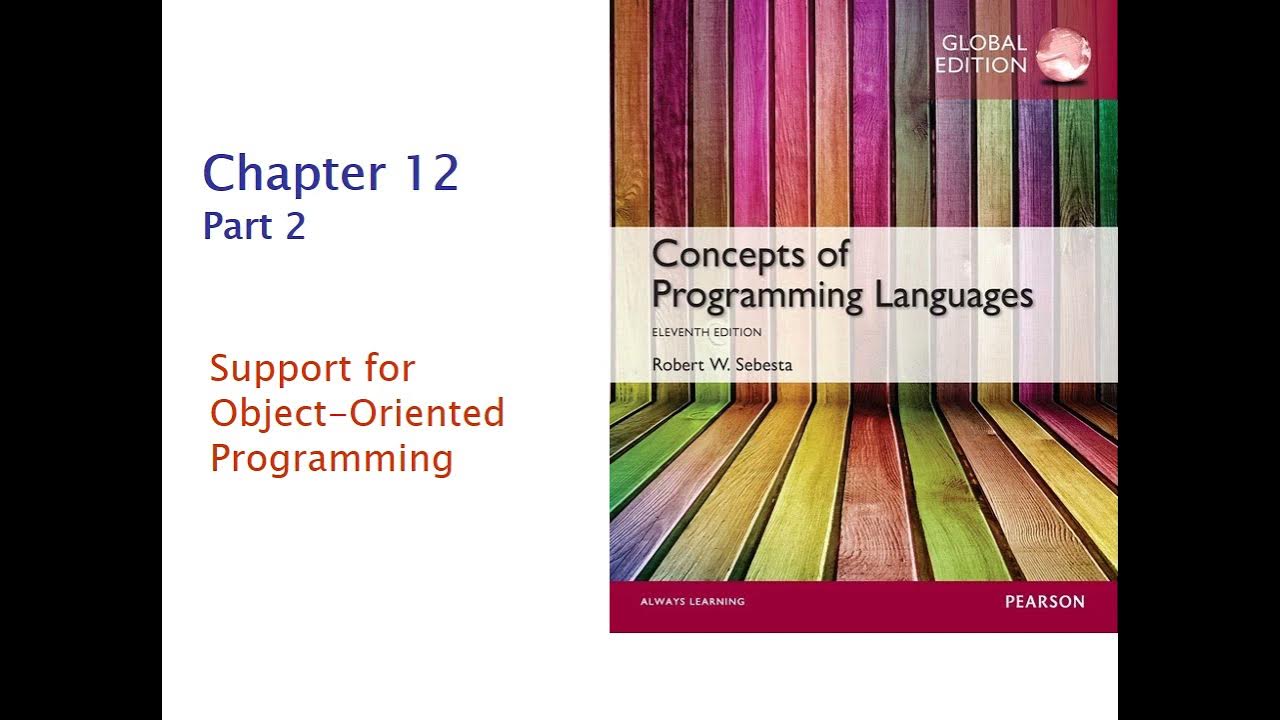Java Basic OOP Concepts | Features of OOPs in Java | Learn Coding
Summary
TLDRThis video script introduces the concept of Object-Oriented Programming (OOP), explaining its significance and features. The speaker discusses the problems OOP was developed to solve, such as the complexity of procedural programming. Key features like classes, objects, inheritance, polymorphism, encapsulation, and abstraction are highlighted. The script aims to simplify understanding by categorizing program logic into classes and objects, emphasizing the ease of managing data and logic. The video promises a detailed exploration of these features in upcoming lectures, encouraging viewers to subscribe for more.
Takeaways
- 📚 The video discusses the concept of Object-Oriented Programming (OOP) and its significance in modern programming languages.
- 🌟 OOP is a programming paradigm that focuses on 'objects', which can contain data and code that manipulate the data, making it easier to model real-world entities.
- 🏭 The speaker introduces the term 'class' as a blueprint for creating objects, defining the structure and behavior without taking up memory.
- 🔍 An 'object' is an instance of a class, which occupies memory and contains actual data that can be processed.
- 🔄 The video highlights the importance of state and behavior in OOP, where state refers to the object's data and behavior to how it acts or responds.
- 📈 Inheritance is a key feature of OOP, allowing for code reuse and the creation of new classes based on existing ones, promoting reusability and reducing redundancy.
- 🔧 Polymorphism is another important concept in OOP, which allows objects of different classes to be treated as objects of a common superclass, enhancing flexibility.
- 🗂 Encapsulation is the bundling of data and methods into a single unit or class, which helps in data hiding and maintaining integrity.
- 🔒 Abstraction is the process of simplifying complex reality by modeling classes that represent essential features without including the background details.
- 🛠 The video mentions the evolution from procedural programming to OOP to address the complexities and challenges faced in software development.
- 📈 The speaker promises to delve deeper into each of these features in upcoming videos, providing detailed explanations and examples.
Q & A
What is the main topic of the video?
-The main topic of the video is Object-Oriented Programming (OOP) and its concepts.
What is Object-Oriented Programming (OOP)?
-Object-Oriented Programming (OOP) is a programming paradigm that uses 'objects' to design applications and programs. It is based on the concept of 'objects', which can contain data, in the form of fields (often known as attributes or properties), and code, in the form of procedures (often known as methods).
What are the problems that OOP was designed to solve?
-OOP was designed to solve problems related to the complexity of programming languages, making it difficult to understand, write, and maintain large programs.
What is a 'class' in the context of OOP?
-In OOP, a 'class' is a blueprint for creating objects. It defines a set of properties and methods that are common to all objects of that class.
What is an 'object' in OOP?
-An 'object' in OOP is an instance of a class. It has its own state (data) and behavior (methods) as defined by the class from which it was instantiated.
What is the significance of 'state' and 'behavior' in OOP?
-In OOP, 'state' refers to the data or attributes of an object, while 'behavior' refers to the actions or methods that the object can perform. These concepts help in defining the characteristics and actions of objects.
What is 'inheritance' in OOP?
-Inheritance in OOP is a mechanism that allows a new class to take on the properties and methods of an existing class, promoting code reusability and reducing redundancy.
What is 'polymorphism' in the context of OOP?
-Polymorphism in OOP allows objects to be treated as instances of their parent class rather than their actual class. It enables a single interface to be used for a general class of actions.
What is 'encapsulation' in OOP?
-Encapsulation in OOP is the bundling of data with the methods that operate on that data. It restricts direct access to some of an object's components, which can prevent the accidental modification of data.
What is 'abstraction' in OOP?
-Abstraction in OOP is the concept of hiding the implementation details and showing only the necessary features of the object to the outside world. It helps in reducing programming complexity and effort.
What does the speaker suggest for those who are new to the channel?
-The speaker suggests that new viewers should subscribe to the channel and access the Java playlist for a comprehensive learning experience on OOP.
Outlines

هذا القسم متوفر فقط للمشتركين. يرجى الترقية للوصول إلى هذه الميزة.
قم بالترقية الآنMindmap

هذا القسم متوفر فقط للمشتركين. يرجى الترقية للوصول إلى هذه الميزة.
قم بالترقية الآنKeywords

هذا القسم متوفر فقط للمشتركين. يرجى الترقية للوصول إلى هذه الميزة.
قم بالترقية الآنHighlights

هذا القسم متوفر فقط للمشتركين. يرجى الترقية للوصول إلى هذه الميزة.
قم بالترقية الآنTranscripts

هذا القسم متوفر فقط للمشتركين. يرجى الترقية للوصول إلى هذه الميزة.
قم بالترقية الآنتصفح المزيد من مقاطع الفيديو ذات الصلة
5.0 / 5 (0 votes)






